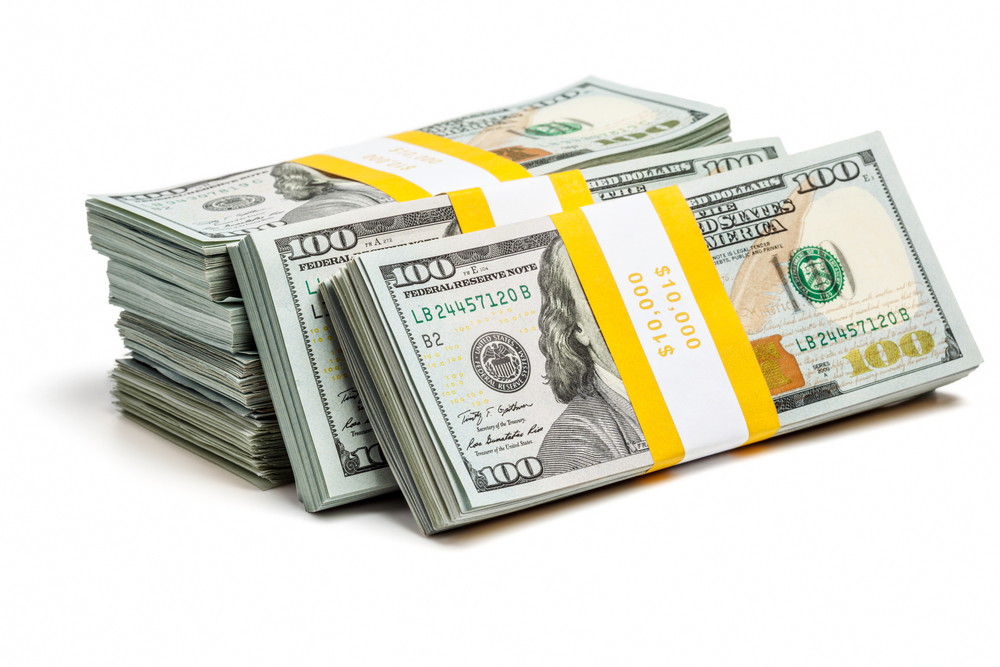Call it a (Slight) Comeback for the Dollar

Please note that we are not authorised to provide any investment advice. The content on this page is for information purposes only.
The greenback staged a reversal yesterday, and there has been follow through buying in Europe after a quiet Asian session. It seems that after last week’s dramatic reaction to the FOMC, the market is probing for the new range, and month, quarter and fiscal year end position adjustments have become complications.
The greenback staged a reversal yesterday, and there has been follow through buying in Europe after a quiet Asian session. It seems that after last week’s dramatic reaction to the FOMC, the market is probing for the new range, and month, quarter and fiscal year end position adjustments have become complications.
The market tried three times to establish a foothold for the euro above the $1.10 level. Yesterday the euro made new highs for the move before reversing lower and finishing the North American session below Wednesday’s low, which carves out a potential key reversal. Follow through selling saw the euro fall to a $1.08, where bid emerged that some linked to Asian central banks. Resistance now is in the $1.0850 area, while the lower end of the range is closer to the week’s lows near $1.0770.
The dollar sold to near JPY118.50 yesterday, but it recovered to finish near JPY119.20. The dollar remains firm but so far, this week’s pattern of lower highs remains intact. Yesterday’s high was just below JPY119.60.
Japan did report a slew of economic data. The overall picture is one of slightly improvement in the labor market, improving consumption, but weak price pressures. Unemployment edged down to 3.5% from 3.6% while the job-to-applicant ratio ticked up 1to 1.15 from 1.14. Overall household spending fell 2.9% from a year ago compared with a 5.1% contraction in January. It is the smallest decline since last November. Retail sales themselves rose 0.7% in February. This was shy of the 0.9% expected increase and the downward revision in the January series to -1.9% from -1.3% initially reported was additionally offsetting.
Most disappointing, even if not unexpected, Japan’s CPI eased. The national headline rate slipped to 2.2% in February from 2.4% in January. It has not risen since last May, and the February decline ended three months of stability at 2.4%. Excluding fresh food, which is Japan’s measure of core inflation, prices rose 2.0% from a year ago, down from 2.2%. When adjusted for the retail sales tax increase last April, which the BOJ target is at zero. This poor performance encourages a majority of market participants to expect the BOJ to adopt more stimulative measures later this year. While we can see some tweaking of assets being purchased (e.g. ETFs and REITs), we are more skeptical of a significant increase in the JPY80 trillion annual target.
The European news stream relatively light, but both Sweden and Norway reported somewhat better than expected retail sales. Despite the deflationary pressures in Sweden, retail sales remain firm. The 0.2% increase in February follows on the heels of a 1.2% increase in January. The year-over-year rate is a healthy 4.8%, down from 5.1% in January, but better than the 3.6% consensus forecast. Deflation, however, is the key issue for policy makers, and many expect the Riksbank to cut rates further and expand its modest asset purchase program.
Norway’s retail sales rose 0.9%in February, which is nearly twice the market consensus, and more than offsets the 0.7% decline in January. Credit growth remains firm (5.4% vs 5.6% in January), and March unemployment was steady at 3.0%. The krone found little support, perhaps the 2% fall in oil prices after yesterday’s surge is taking a toll. The euro recorded four day highs against the krone to almost NOK8.68 from a low yesterday of NOK8.535.
There are two features of the North American session today. First is the data. US Q4 GDP expects to revise slightly higher to 2.4% from 2.2%. Personal consumption, which may be more important for policy makers than the overall economic growth expects to revise to 4.4% from 4.2%. Place the softer consumption data in Q1 15 in that context. In addition, the University of Michigan’s final March consumer confidence figures report. In addition to the headline, there will be scrutiny of the inflation expectations component. The long-term expectation (5-10 years) is at 2.8%. With a brief exception, it has been between 2.7%-2.9% since the end of 2013. The Fed has seemed to emphasize this over the market-based measures though as we noted yesterday, US 10-year breakeven rates are rising.
Second, both the Fed Chair and Vice Chair speak today. Fischer speaks in Frankfurt prior to the open of the North American markets. He spoke to the NY Economics Club earlier this week, pointed to a June-September lift-off and did not show much concern about the dollar or unorthodox easing of monetary policy in Europe and Japan. Yellen speaks toward the end of the day on monetary policy at a San Francisco Fed conference. Look for our note later today summarizing what we think are the policy signals from the Fed’s leadership.
Dollar Extends Yesterday’s Recovery is republished with permission from Marc to Market




